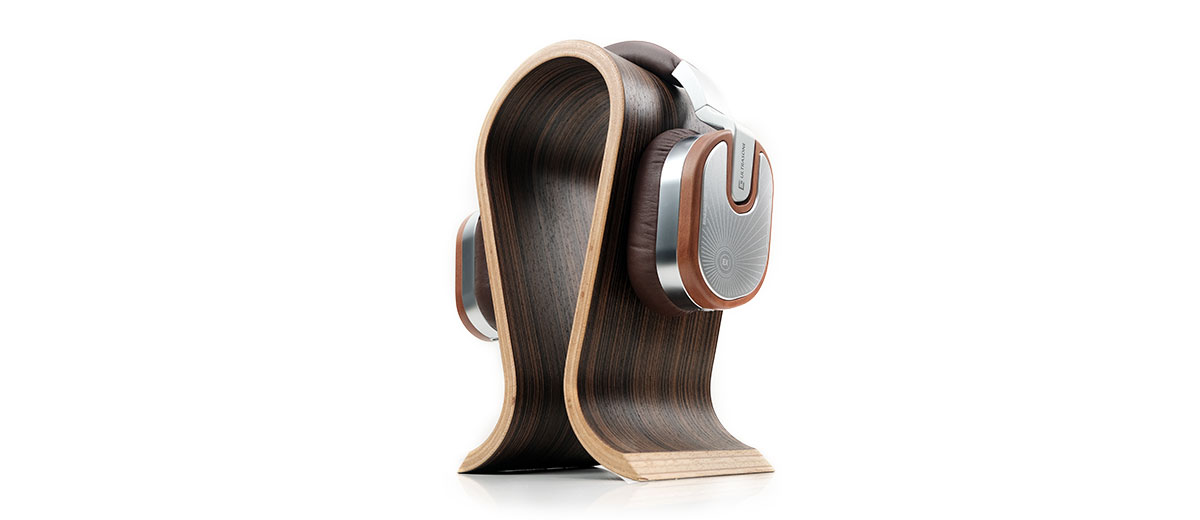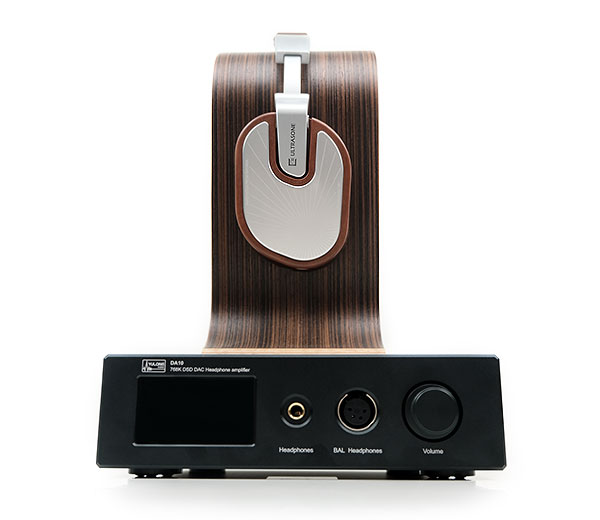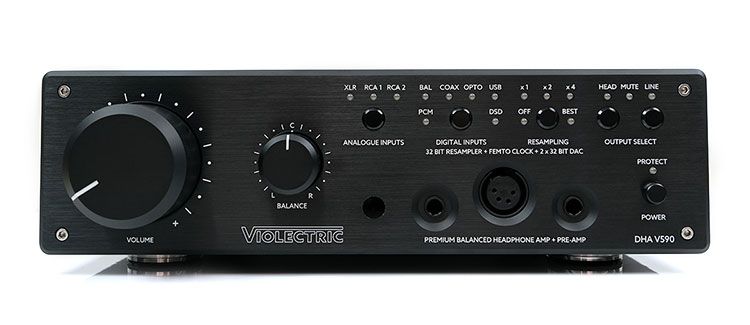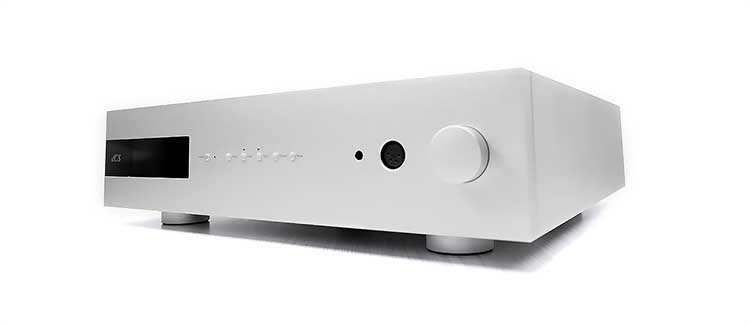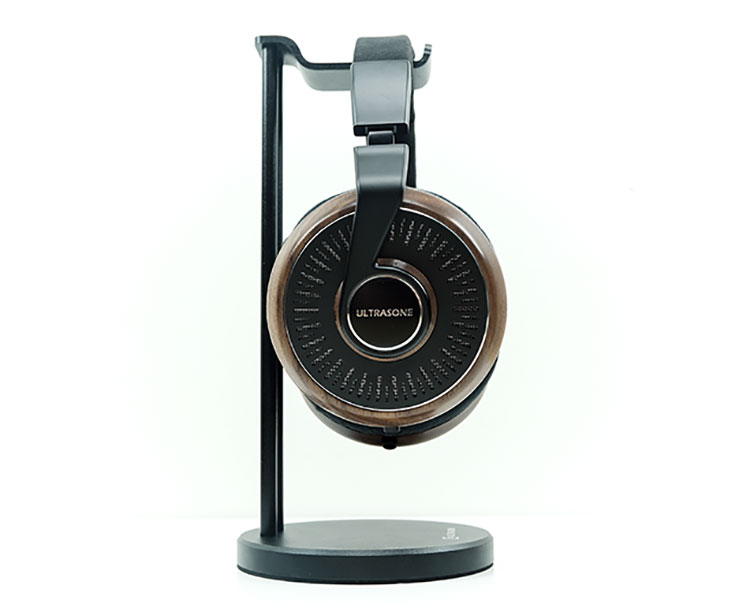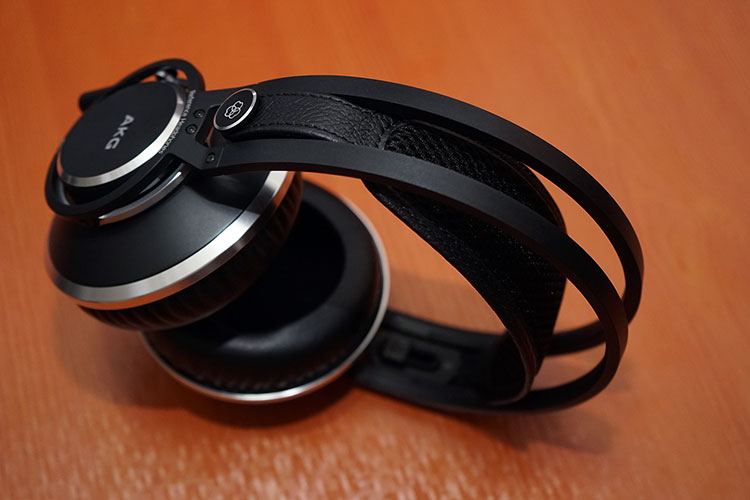Edition 15 Veritas Sound Impressions
Summary
The Edition 15 Veritas delivers an excellent closed-back dynamic driver performance and once again, something greater than my expectations coming into this review.
I had half-expected two of my other high-end closedbacks, the Ether C Flow and the K872, to blow it out of the water. Nothing could be further from the case, in fact, I ended up enjoying the Veritas more than those two competitors for a number of reasons, (see comparisons below).
This is a smooth and meaty-sounding tuning with a solid but not overly weighted bass response, a slight bump in the lower mids that carries that low-end warmth and body upwards, a peak around 2-3k for vocal forwardness, and a secondary nudge around 5-7k for treble presence. You could call it a natural to slightly warm tone overall rather than analytical or clean sounding.
Granted, like many closed-back headphones it delivers more of an intimate soundstage, more moshpit or studio room than an arena or hall-like atmosphere. Variants such as the Ether C Flow pull back in the mids and flatten the bass a bit more to create a perception of more space. Others like the K872 pull harder from the upper mids and treble to draw your attention upwards.
The Veritas will take a path right to the middle, with an attention-grabbing muscular midrange delivery combined with rich and big-sounding vocals. You will not find a huge amount of air beyond but the separation and control through those all-important mids, particularly with a resolving source/amp pairing, do not seem overly affected by the faded upper-treble.
Timbre
The Veritas timbre has an even-harmonic bias but not overly so. Instrumental notes and vocal performances are full sounding, and detailed but not rounded or dull in tone. Some of the credit for that tone is due to that secondary 5-7k treble nudge which is very finely balanced for me.
What I mean by that is that it is marginally secondary to the Veritas’ 2-3k peak which does have a little more dB boost. Anything that pitches across that 2-3k range will pick up more from the secondary treble nudge in terms of odd-harmonic influences. Too much and it can be hard-edged and sibilant, too little and it becomes soft and dull.
Here Ultrasone has done just enough for me to get the balance right up top for an energetic lower-treble sparkle but not too much that it becomes too hot to handle. Source synergy will play a final role in that also.
For example, the Violectric V281 pairing tended to produce some harmonic dissonance around the treble that grated on my ear whereas the dCS Bartok and Xi Audio Formula S pairings offered a smoother treble and a better harmonic balance through the mids as a result.
The second key attribute of the Edition 15 Veritas timbral coloration is the lower-midrange starting around 400Hz up to around 1k where there seems to be a slight bump. It is not a huge bump and seems to be in line with a similar elevation in the bass response from 50Hz to 100Hz.
Combined they give the Veritas lower-mid instrumental timbre a degree of warmth, great body, and to a lesser extent outright power. I say ‘a lesser extent’ for power because I find it to be more about quantity than an outright extension as you would find on planar drivers such as the HEDDphone or the Final Audio D8000.
Staging
No surprise but this is an intimate presentation, much more so than the open-back Edition 11 and our compared flagship alternatives, the Ether C Flow and the K872.
Importantly, the tuning for intimacy over space is on purpose and shows a surprisingly excellent level of separation despite the lack of upper-most extension. Closed-back will never be as airy and open as open-back headphones so why play for that space?
To that end, the Edition 15 Veritas calling card is that forward midrange with the 2-3k bump which pushes vocals front and center. The aim here seems to be that smokey lounge or chamber scene bringing you right to the front of the stage.
Play some Alicia Keys ‘That’s When I knew’ and you will know exactly what I mean by that close-type vocal-focused staging ambiance. That is a good move because the vocals on the Edition 15 Veritas, particularly female and Alicia’s rich soulful vocals, have some gorgeously detailed texture and character to them.
The full-sounding lower-mids will also bring some positioning emphasis to heavy rhythm guitar work whilst lower-pitching drums do have a bit more solidity and presence to them compared to the leaner-sounding AKG K872 drum timbre.
My only staging caveat is that all the lower-mid presence can overpower some male vocals that register in the same key or pitch. This is when I often go for a more neutral or clean-sounding source to keep that in check.
Synergy
Desktop Pairings
With some top-class desktop rigs, the Edition 15 Veritas can sound very impressive for a closed-back headphone. It does require plenty of current and passing it through 5 different amplifiers here all need to go as high as most of my medium efficiency planars in terms of volume.
These are not weak amplifiers, we are taking dCS Bartok, Violectric V590, and the V281 preamped by the V590, as well as the Chord TT2 and the Xi Audio Formula S preamped by the dCS Bartok Ring DAC.
That does mean that the Edition 15 Veritas has a level of scale and can cope with power as well as benefit from the better dynamic range from amps and DACs such as these.
Violectric V590/V281
The rest will come down to timbral preference and I have some based on the tests with these desktop amps. The first is the low-end heft. I found the 2 Violectric amplifiers to give me the most explosive low-end with the Edition 12 Veritas, particularly the V281 preamped by the V590 which was a glorious pairing for power and slam.
The V590 headphone output will take you close but I find the pairing just to pull back a little on the bloom making is planted but more balanced sounding. As time went by I did find myself biasing towards the V590 for two reasons.
The first is the top-end refinement which is smoother on the V590. Even with the resample rate set to 96k which is the smoothest setting for its DAC, the V281 has a little bit of a harmonic dissonance on the Veritas top-end that renders percussion and treble pitching a little uneven and sharp though not overly forward.
The V590 amplification with the same DAC doesn’t trigger that same sound with the Veritas which makes it easier on my ear.
The second is the midrange clarity, the strength of the Veritas presentation. Neither are overly forward sounding compared to the other desktop setups but the V590 has a bit more clarity with less bass bloom overpowering the Edition 15 Veritas midrange. It sounds the cleaner and clearer of the two.
dCS Bartok/Xi Audio Formula S
The dCS Bartok and the Formula S were more to my liking than the Violectric in terms of balanced but planted performances with the Edition 15. They are not as bass-heavy but do sound firm, dense, and slightly to the warm side.
The Formula S is the sweeter of the two and just a lighter touch with more airiness than the Veritas. You also get a nice infusion of low-end power from the Ring DAC which I love.
The Bartok’s own amp prefers a more analog mid-centric and lower-mids bias with the Veritas meaning it is not quite as airy but meatier on the mids and bass. I actually preferred the Ring DAC from the Bartok preamping the Edition 15 Veritas because of the slightly airier and roomier sound it delivered.
Both of these setups are incredibly resolving by the way and do give me more complexity and room from the mids upwards than the V590 or the V281 which prefer to focus on that low-end power.
Chord Electronics Hugo TT2
This was a fascinating pairing and quite different from the rest of the pack. The presentation was incredibly precise and the amount of instrumental separation and control was the most impressive of the amps tested. One thing I came away with from the TT2/Veritas pairing was just how vivid the sound became.
However, it was very intense at the same time and perhaps a little too vivid and not as natural sounding as something like the Bartok Ring DAC performance. I tended to prefer their more ‘relaxed sound’ but at the same time, I can see why someone would prefer the TT2’s articulation and energy.
Portable Pairings
The singular problem with DAP pairing is the lack of a balanced capable cable out of the box with the Edition 15 Veritas which is rated at 94dB SPL. That means we have to find a single-ended source with enough testicular fortitude to do the business and sadly, it is not the HiBy R8.
Now current is not an issue with high gain Turb mode, it can go plenty loud with the Edition 15 Veritas pairing. I also admire the way it smoothly runs over sibilance bumps in bright vocal mixes such as Nina’s 2016 Beyond Memory track from her 2016 synth-wave classic Sleepingwalking album.
Rather, coming from a desktop solution you are going to notice just a little bit of softness and lack of urgency in the single-ended sound signature. It doesn’t quite have the same slam and transient response as either the TT2, (see below) or the Formula S pairing. Can I enjoy it? Sure, if I had not heard the desktop performances first.
The Lotoo PAW Gold Touch’s single-ended output has a bit more power than the HiBy R8 equivalent at 500mW into 32Ω compared to 300mW and it does show an improved performance. This is a more neutral tuning with a punchier sound and more treble presence.
That does help balance out the warmth of the Veritas lower-mids and deliver a bit more headroom also at the top-end. Overall, the Edition 15 Veritas sounds a lot more balanced and energetic with the Lotoo PAW Gold Touch.
Select Comparisons
Ultrasone Edition 11
€999
Technical
The Edition 11 is an open-back circumaural headphone launched at the tail end of 2018 with our full review here in 2019. It is priced a fair bit lower than the Edition 11 but could be a smart investment given its limited-edition status and excellent performance.
Also, the Edition 11 uses a 40mm driver but the construction is quite different with the use of Ultrasone’s TruText bio-cellulose fiber compound membrane for the diaphragm as opposed to the more exotic gold foil membrane and a titanium dome used inside the Edition 15 Veritas.
The ratings are also a little different between these two with the Edition 11 rated at 32Ω and 94dB SPL and the Edition 15 Veritas a little higher at 40Ω but the same sensitivity of 94dB on paper. Truth be told I found the Edition 11 a little harder to drive than the two but both really benefit from quality amplification output and if possible going balanced.
Speaking of balanced, the cable connections on the Edition 11 are more like an IEM with a 2-pin 0.78mm dual entry that will work with any IEM cable you have with the same connectors. The Edition 15 Veritas uses LEMP push-pull for its 2-pin socket. It is trickier to cable roll due to the depth of the socket but more secure than the 0.78mm 2-pin sockets of Edition 11.
Design
Both look stunning and this is purely personal preference but I have a slight bias to the Edition 11 aesthetic. This is a dark walnut wood cup with a matte black finished aluminum plate topped off with an Alcantara-wrapped headband and micro-velour pads.
Granted the American cherry wood and Merino leather pads and headband of the Edition 15 are just as stunning and probably more expensive so the above is really just me and you may think quite differently.
The comfort levels are marginally in favor of the Edition 11 due to the bigger classic rounded pads and softer velour padding. This is an open back so there is less of a requirement to isolate and seal. The Edition 15 Veritas actually has the same level of clamping force as the Edition 11 but the leather pads create a firmer grip and being a closed-back it isolates a lot better.
Both are dual-entry cable systems and both come with a similar 4-core 3m cable in terms of finishing and handling though the Edition 11 uses 0.78mm 2-pin connectors. Both have unbalanced 3.5mm jack terminations with excellent strain relief on the jack and a 6.35mm converter.
The Edition 15 Veritas also has that additional shorter 1.3m cable with the simpler 3.5mm termination and comes with that exquisite leather display case. You get a leather pouch with the Edition 11 and a handy little black metal hanging stand.
Performance
The Edition 11 is an open-back headphone so the presentation has quite a different quality to it, particularly in the high-frequency extension and stage expanse. Whereas the Edition 15 Veritas will offer more of an intimate chamber or room-style staging dimension with a greater focus on mids and low-end warmth.
The Edition 11 follows more of a classic u-shaped response curve with a slight dip in the lower-mids, a bump from 1-3k, and then a smaller peak around 7k. It is a relatively balanced sound overall but as mentioned one that stands back a bit relative to the denser sound of the Edition 15 Veritas.
Low-end
The Veritas has an elevated sub-to-mid bass response curve but it does not really dip as much into the lower-mids as the Edition 11. That means instruments will sound closer and warmer and with more body. That intimate and more aggressive bass response also means the Veritas sounds the weightier of the two headphones and can throw out a bit more slam.
What was interesting was the superior control and separation in the Veritas low-end despite having a more intimate presentation. Sure, the Edition 11 is more spacious sounding but the bass response felt a little on the slower side and not quite as well defined.
Mids & Treble
Through the mids, the Veritas 2-3k peak combined with the lower-mids warmth will bring you in closer offering a richer and smoother instrumental and vocal timbre. I do prefer the Veritas for vocal performances which have a much better body and presence.
Yes, there is less treble influence so notes do have a more liquid and rounded feel to them but like the low-end response, you can tell how much more refined the Veritas driver is in delivering detail to the texture of each vocal note. It simply sounds more vivid and engaging.
The Edition 11 might be a shade more tonally correct in terms of harmonic balance over the mids with its stronger treble and better headroom but the presence and complexity in the texture of each note do not shine through quite as well.
Overall, the Edition 11’s open-back design will give you more staging room and an airier presentation but the Edition 15 Veritas driver is more refined, especially for vocal texture and bass layering.
Dan Clark Audio Ether C Flow
$1799.99
Technical
Technically, this is the V1.1 version of the C Flow we are comparing to which uses the upgrade kit we reviewed here in late 2018. This is still DCA’s flagship closed-back Ether Edition and I am not sure as of now whether there will be a closed-back Ether 2.
Essentially the kit retunes the drivers’ performance via a series of baffle vents and driver stickers as well as some new filter pads inside the main earpads for about $30. For me, it tended to smooth out the suck-put from the lower mids offering better mids and vocal presence.
The Ether C Flow is a large circumaural planar magnetic driver headphone which is quite a contrast to the 40mm GTC dynamic driver inside the Edition 15 Veritas.
Inside, The Ether C Flow uses DCA’s TrueFlow waveguide technology for improved airflow through its magnet design. This is in combination with Dan Clark’s usual aftermarket tweaks included in the upgrade pad and filter kit.
The Ether C Flow is rated at 23Ω and 92dB SPL and is a little less efficient than the Edition 15 Veritas which is rated at 40Ω and 94dB SPL.
Neither are what I would define as sensitive headphones and both will benefit from a decent current draw from a good desktop amp or a powerful balanced output from the likes of the HiBy R8’s 1W 4.4mm balanced.
Design
Massively different design ethos and there is merit in both. However, for pure aesthetical impact, Edition 15 does look snazzier with a bit more ‘pop’ in its color scheme and possibly more exotic materials.
The Ether C Flow has a classic round cup headphone styling with a more subdued carbon fiber cup design and an excellent Nitinol headband system. The Edition 15 Veritas is the more compact of the two and uses that attractive blend of American cherry wood and stainless steel plates with darker brown Merino leather pads.
The Italian Nappa lamb leather pads of the Ether C Flow are sumptuous and super soft on the ear. They do not seal as well as the Edition 15 Veritas, possibly due to the relaxed response of the pads but they are comfier than the firmer grip of Merino leather pads.
The Ether C Flow weighs more than the Edition 15 Veritas at 390g compared to 320g but on the head, the larger planar headphones have better pressure distribution and feel more balanced with that pressure strap and large pads. The Veritas makes more use of a lateral clamp and you can feel it.
Both use dual entry cables but you can check out with a balanced VIVO cable for the Ether C Flow though it adds a little to the cost $50 for the 3m version) it is well worth it for the better dynamic range performance. Sadly, no such option for the Edition 15 Veritas but you can buy an XLR version separately for $249 from their store.
Performance
Staging
Although both are closed-back headphones the presentations are very different. The first thing you are going to pick up is the staging dimension with the Ether C Flow offering a more open staging quality and a bit more headroom also.
A bit of that has to do with the Ether C Flow dipped mids which create a stronger perception of space whereas the Veritas is definitely more mids-forward.
Mids & Treble
The Edition 15 Veritas treble is also more relaxed sounding pulling the headroom down a bit and pushing more emphasis onto the mids. The Ether C Flow has a stronger 5-7k peak which shines through on percussion timbre with a brighter cleaner strike.
The Ether C Flow’s mids dip combined with the 5-7k peak creates a more neutral tone and more bass/treble contrast in its timbre whereas the Veritas has a more focused lower mids and 2-3k elevation sounding the warmer of the two.
Vocals, particularly those that cross on that 2-3k bump on the Veritas also sound further forward, broader, or fuller sounding. I have to note though that Veritas is not a comparatively lush mids performer. It has enough of a 5-7k peak to add some necessary bite and presence into percussion but not as much as the Ether C Flow peak.
Low-End
The Edition 15 Veritas is a little more elevated in the lower-mids from around 400-800Hz whereas the Ether C Flow is a lot more linear from 200Hz right up to around 1k. Pounding rhythm guitar work actually comes across with a bit more PRaT on the Edition 15 Veritas compared to the Ether C Flow which sounds more neutral.
On the low end, well it’s a case of dynamic versus planar with some excellent extension and control from the more linear-sounding Ether C Flow and a punchy denser sound from the Veritas though not quite the same extension.
AKG K872
$1499
Technical
As of today, this is still AKG’s flagship dynamic driver closed-back circumaural headphones. I do not get a sense that AKG will release a new or improved version in this current climate or anytime soon.
The AKG K872 uses a larger 53mm dynamic driver with a unique two-layer, copper-covered aluminum voice coil coupled with some very strong high-performing Tesla 1.5 magnets.
This is compared to the Edition 15 Veritas’ smaller 40mm gold foil membrane and a titanium dome or GTC drivers combined with its S-Logic® Plus technology for positioning in the cup.
The K872 is rated at 36Ω and 112dB SPL so it is more sensitive and easier to drive than the 40Ω and 94dB SPL Edition 15 Veritas driver but not overly so in our testing. Having used the K872 for a while, I do find that a decently powered amplifier, be it portable or otherwise, does give the K872 a noticeable lift in dynamic range so I would not advise plugging it into a smartphone.
Design
The K872 is a bigger and slightly heavier set of closed-back headphones sporting what I would define as that classic studio black look. It does not have the design flair of the Edition 15 and uses quite a bit more plastics in terms of materials but the quality of construction is just as good.
Of particular note are the K872 3D protein leather pads which have a very unique almost back-to-front fitting. What I mean by this is that they are designed in such a way as to give more space on the inside than the outer rim opening.
This opening is cut in such a way as to act as a seal behind your ear and leave plenty of room on the inside for your ears to fit without any discomfort or the padding to encroach uncomfortably on your outer ear.
It also means less clamping force is required to get a very strong seal. Something which the Edition 15 Veritas has to do with because of the more traditional, albeit more luxurious, Merino pads fitting.
What that means is that the K872 is the comfier of the two headphones as well as isolating a bit better. The Edition 15 Veritas is smaller, more compact, and handles better but its pressure balance is not quite as optimal on the head.
Both use LEMP push-pull connectors but here the K872 has a slight issue because it uses a single-entry 3-pin Mini XLR system compared to the more standard 2-pin of the Edition 15 Veritas.
It makes balanced cables hard to come by due to the configuration. Also, the signal path from cup to cup on the K872 is done via a flexible printed wire near the gimbal which might be easy to break if caught.
Performance
Treble
The most glaring difference is the treble peak of the K872 from around 6-8k. It is more emphasized than the 5-7k peak of the Edition 15 Veritas with more extension and energy. It will sound the brighter and airier of the two sound signatures.
I still think the K872 is a relatively smooth performer compared to the ‘brighter than the sun’ K812 open-back but here it just sounds a little harder-edged, odd-harmonic emphasized, and relatively fatiguing with some percussion-heavy passages.
That will slip into vocal performances also at a higher pitch sounding a little more sibilant and lighter in body whereas the Edition 15 Veritas is much the smoother of the two. Granted it might sound the darker of the two headphones with a more relaxed treble but I would take that over an edgier top-end.
A good example is Florence & The Machine’s Dog Days from around 0.40 to 1.40 with its stripped-down clap, tambourine, short hi-hat, and drum delivery behind the main vocal performance. It can be a hard tone if the acoustics are not properly damped down or smoothed out on the top end.
Here the K872 does sound the airier of the two with better instrumental separation but the clap and tambourine sound sharper. Whereas the Edition 15 Veritas is closer sounding, the top-end pulls back a little so you still get the vividness and solidity of each attack just not as jarring.
Low-end
On the low end of that same track passage, that kick drum mix has a bit more presence and bloom on the Edition 15 Veritas whereas on the K872 it sounds the more neutral of the two with slightly less warmth.
That sort of tilts the listening bias a bit lower on the Veritas with its greater lower-mid elevation and bass warmth whereas with the K872 the bass is more neutral with less weight and warmth thus the focus is towards the energetic treble percussion energy.
Our Verdict
The Edition 15 Veritas surprised me and in a very good way. I usually have a few reservations with regard to flagship-level headphones with closed-back builds but the Veritas smartly plays to the strengths of that design and avoids trying to shape and bend in such a way as to poorly mimic open-back qualities.
That means a muscular midrange, beautiful big-sounding vocal performances, and a finely balanced treble with just enough of a tilt upwards to distract you from the faded upper treble.
Intimate it may be and it will throw you right to the front of the stage but the excellent control and separation ensure it stays well away from being just a big wall of sound. A mids man like me can have no complaints there with the resolution and detail the Veritas offers.
And yeah, it is built beautifully but then that is no surprise, it is what Ultrasone does so well. Just make sure you plug it into a good-performing setup with a balanced cable to hear it to its full potential.
Ultrasone Edition 15 Veritas Specifications
- Type: Circumaural, closed-back, dynamic-driver headphone
- Driver complement: One 40mm Gold Titanium Compound dynamic driver per channel
- Frequency response: 5Hz–48kHz
- Impedance: 40 ohms
- Sensitivity: 94dB
- Weight: 320g

